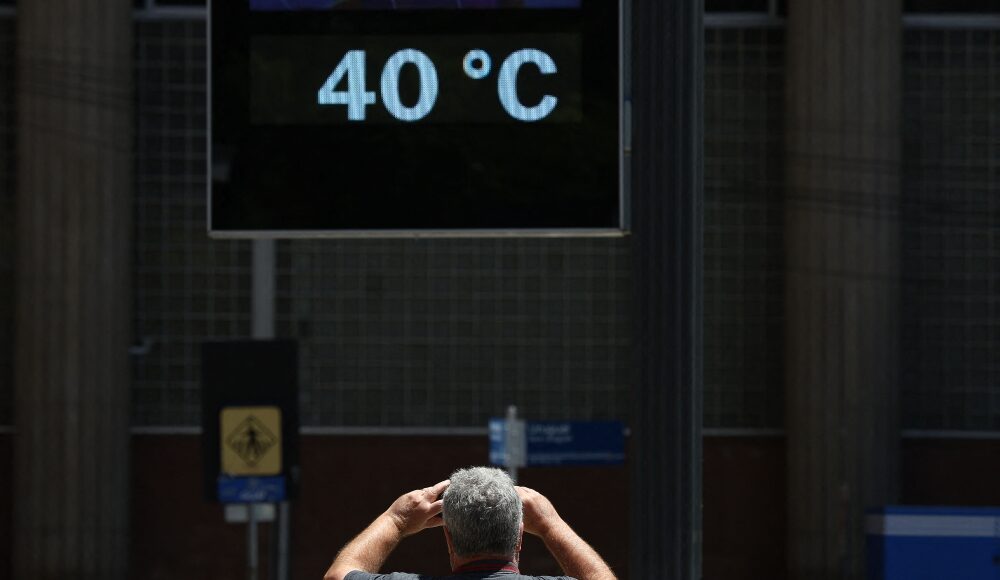- April 2025 was the second-hottest on record, continuing a streak of extreme global heat that has defied expectations even after El Niño faded.
- Scientists warn the world is on track to exceed the 1.5°C warming limit within four years, with some saying the target is no longer achievable.
- Experts remain concerned that rapid warming, driven by fossil fuel use and other factors, could trigger long-lasting climate consequences.
PARIS, May 8 — Global temperatures were stuck at near-record highs in April, the EU’s climate monitor said on Thursday, extending an unprecedented heat streak and raising questions about how quickly the world might be warming.
The extraordinary heat spell was expected to subside as warmer El Niño conditions faded last year, but temperatures have stubbornly remained at record or near-record levels well into this year.
“And then comes 2025, when we should be settling back, and instead we are remaining at this accelerated step-change in warming,” said Johan Rockström, director of the Potsdam Institute for Climate Impact Research.
“And we seem to be stuck there. What this is caused by — what is explaining it — is not entirely resolved, but it’s a very worrying sign,” he told AFP.
In its latest bulletin, the Copernicus Climate Change Service said that April was the second-hottest in its dataset, which draws on billions of measurements from satellites, ships, aircraft and weather stations.
All but one of the last 22 months exceeded 1.5 degrees Celsius above pre-industrial levels, the warming limit enshrined in the Paris Agreement, beyond which major and lasting climate and environmental changes become more likely.
Missed target
Many scientists believe this target is no longer attainable and will be crossed in a matter of years.
A large study by dozens of pre-eminent climate scientists, which has not yet been peer-reviewed, recently concluded that global warming reached 1.36°C in 2024.
Copernicus puts the current figure at 1.39°C and projects 1.5°C could be reached by mid-2029 or sooner, based on the warming trend over the last 30 years.
“Now it’s in four years’ time. The reality is we will exceed 1.5 degrees,” said Samantha Burgess of the European Centre for Medium-Range Weather Forecasts, which runs Copernicus.
“The critical thing is to then not latch onto two degrees, but to focus on 1.51,” the climate scientist told AFP.
The photo taken on July 6, 2024 shows an aerial view of a partially submerged Guanyin temple in floodwaters in the swollen Yangtze River, in Ezhou, in central China’s Hubei province. — AFP pic
Julien Cattiaux, a climate scientist at the French research institute CNRS, said 1.5°C “would be beaten before 2030”, but that was not a reason to give up.
“It’s true that the figures we’re giving are alarming: the current rate of warming is high. They say every tenth of a degree counts, but right now, they’re passing quickly,” he told AFP.
“Despite everything, we mustn’t let that hinder action.”
‘Exceptional’
Scientists are unanimous that burning fossil fuels has largely driven long-term global warming that has made extreme weather disasters more frequent and intense.
But they are less certain about what else might have contributed to this persistent heat event.
Experts think changes in global cloud patterns, airborne pollution, and Earth’s ability to store carbon in natural sinks like forests and oceans could also be factors contributing to the planet overheating.
The surge pushed 2023 and then 2024 to become the hottest years on record, with 2025 tipped to be third.
“The last two years… have been exceptional,” said Burgess.
“They’re still within the boundary — or the envelope — of what climate models predicted we could be in right now. But we’re at the upper end of that envelope.”
She said that “the current rate of warming has accelerated, but whether that’s true over the long term, I’m not comfortable saying that”, adding that more data was needed.
Copernicus records go back to 1940, but other sources of climate data — such as ice cores, tree rings and coral skeletons — allow scientists to expand their conclusions using evidence from much further into the past.
Scientists say the current period is likely to be the warmest the Earth has been for the last 125,000 years. — AFP





